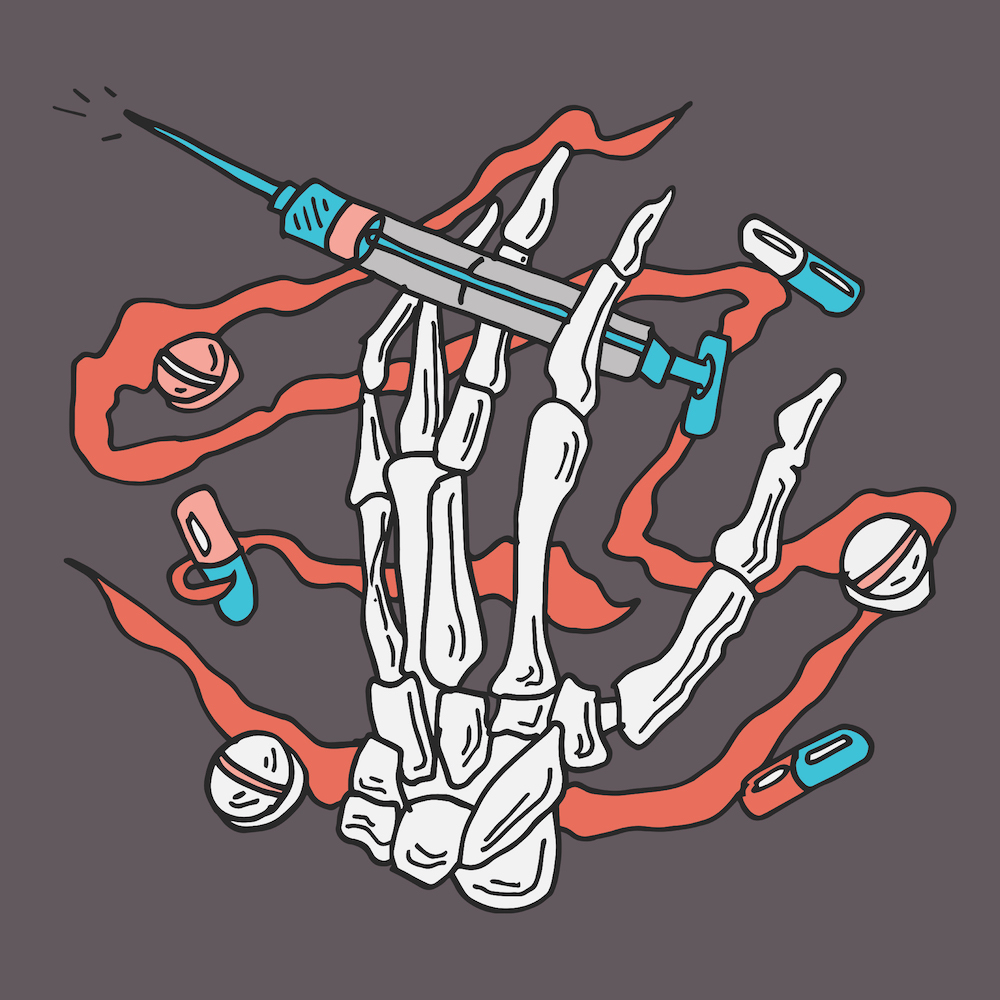Should student leaders have access to naloxone, the opioid antagonist?
As the infamous fentanyl crisis begins to slither its way into Montreal, many Canadian university students fear deadly substances could be lurking in the drugs recreationally consumed at back-to-school parties and orientation events. Combatting the possibility of fatal opioid overdoses is a priority for many student associations.
Recently, student association executives and frosh leaders across Canada have expressed interest in carrying naloxone kits at university orientation events to prevent drug-related deaths. Naloxone, commonly known by the brand name Narcan, is an antidote medication used to counter the effects of opioids. According to the government of Ontario, a kit typically includes two vials of naloxone, two syringes with needles, two devices to open vials safely, a pair of non-latex gloves and a card identifying the trained owner of the kit.
Allowing student leaders to have access to naloxone is tricky territory, according to McGill University nursing student Nathalie Wong. Based on what she has learned in her nursing courses, she said the signs and symptoms of opioid overdose can often be mistaken for cardiac arrest. In the event of someone suffering from a cardiac arrest (rather than respiratory arrest—a very common symptom of opioid overdose), Wong said the victim would be in need of immediate CPR, not naloxone.
“If a student leader isn’t trained to see opioid overdose on a regular basis, then it can become very difficult to assess and distinguish [from] another health issue,” she said.
According to Wong, she only began learning about these topics after about 30 weeks in nursing school. She said she did not feel capable of properly diagnosing an opioid overdose until she had participated in clinical rotations at the hospital. Even today, Wong said handling powerful antidotes and overdose victims is no small task.
“If I, as a student nurse, needed to administer [naloxone] to a patient, I would have my [instructor] with me,” Wong said. “So, even as a student nurse, with three years of study and training, administering [naloxone] is a very big deal.”
Wong said she is pleased that paramedics in Quebec are finally beginning to carry the drug with them when they respond to calls, as opioid concerns continue to rise across the country, especially among university-aged students.
When it comes to orientation events and the possibility of dealing with overdoses, Concordia student and ASFA frosh leader Immanuel Matthews said he was not trained to administer any sort of antidote, but he was thoroughly educated in prevention and intervention.
“We had two two-to-three hour long trainings to prepare us to handle situations concerning alcohol, drug use and just to provide a safe, enjoyable experience for freshmen during frosh,” he said.
According to Matthews, frosh leaders were also instructed to call paramedics in case of an emergency and to immediately report any incidents to Concordia security and ASFA executives. As for naloxone, Matthews said he believes administering it is a job better left for those with proper training.
“I think that first responders should be able to administer it,” he said. “Sometimes an overdose victim has minutes that decide whether they live or die, and I think that first responders are in responsible enough positions to be granted that authority.”
While doctors and nurses on campus are technically authorized to administer naloxone, director of public relations and official university spokesperson Mary-Jo Barr said having specially trained paramedics would be much more efficient.
“Due to the nature of a drug overdose, where heart rates can drop dramatically and leave one immobile, it’s far better to place naloxone in the hands of the front-line first responders who are closer to the scene,” Barr said.
She added that Concordia is closely monitoring the situation regarding naloxone in Quebec and across Canada.
“The province is considering allowing certain people with special training to administer it,” Barr said. “If such changes are adopted, our front-line responders would be well placed to administer the drug. At this time, we are waiting to hear about the government’s next steps.”
Graphics by Zeze Le Lin




